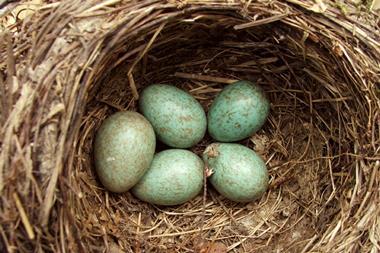The UK National Employment Savings Trust (NEST) has seen a return of more than 17% in the year to April, quadrupling its investment performance from last year.
Overall, the state-backed defined contribution (DC) master trust now has £420m (€592m) in assets, up from £104m in April 2014, while auto-enrolment has doubled membership to more than 2m.
NEST said allocations to property, corporate bonds and developed market equities were behind the 17% investment returns, a boost after the below-benchmark return in 2014.
Across its holdings, NEST’s asset allocation remained relatively unchanged from 2014 aside from a drop in its proportional allocation to a BlackRock multi-asset fund.
While the value invested rose from £13.8m to £14.5m, as a proportion of assets, it fell 10 percentage points to 3.5%.
NEST told IPE it would diversify away from the BlackRock fund as assets grew, and instead create its own multi-asset strategy using single-asset mandates.
Mark Fawcett, the fund’s CIO, said: “Moving from a single [multi-asset] fund to standalone mandates gives us greater control over our asset allocation.
“Our strategy has been to achieve diversification in this way as and when appropriate.”
NEST also added an emerging market equities strategy last year – using Northern Trust Asset Management and HSBC Global Asset Management – which now accounts for 1.73% of its overall portfolio.
The public service pension fund has 99% of members and assets invested in the default investment strategy, divided into three investment strategies depending on the member’s age.
Its ‘growth phase’, where most members are invested, produced a 17.5% investment return over the year, up from 4.4% in 2014.
The strategy, which seeks to return UK inflation plus 3%, is the core portfolio seeking investment returns while managing volatility, investing nearly 49% in equities and 20% in property.
NEST’s ‘foundation phase’, which has a lower-risk strategy for newer and younger members and targets the consumer prices index (CPI) measure of inflation, produced a 13.2% return, compared with 3.67% in 2014.
The strategy has a 35% allocation to equities, with one-quarter invested in cash to protect fund value and 17% in property to provide an inflation link.
Its ‘consolidation phase’, which progressively aligns member assets for retirement over 10 years, produced a 0.51% return, matching 2014.
The fund allocates more to investment-grade bonds (18.6%) and UK Gilts (14.1%) but still carries a 33% allocation to equities.
NEST’s best returns came in its separate Islamic Sharia-compliant fund (23.2%) and its ethical fund (20.6%) options.
These, however, only account of 0.08% and 0.14% of total assets.
Earlier this month, NEST published its ‘Future of Retirement’ paper, detailing how it plans to adapt to the DC freedoms granted recently by the UK government.






















No comments yet